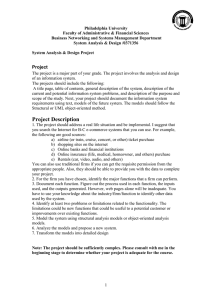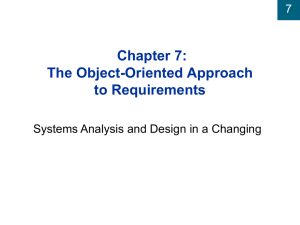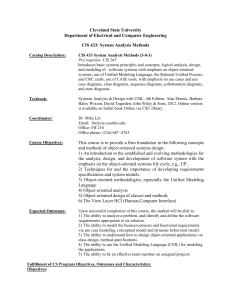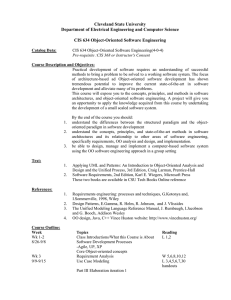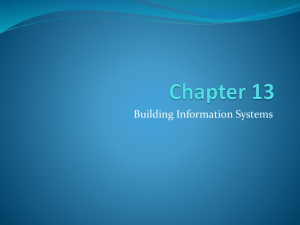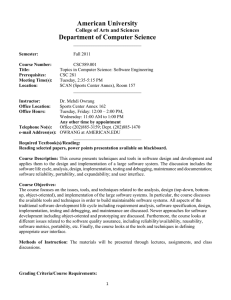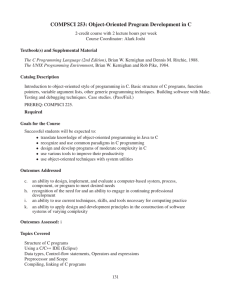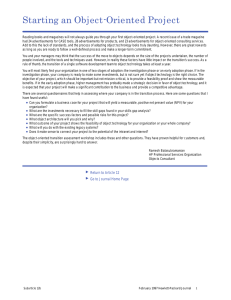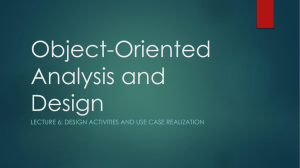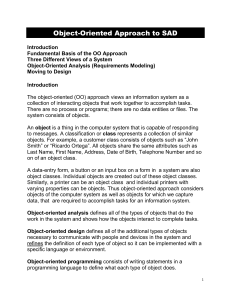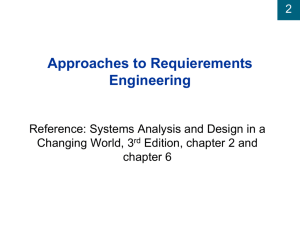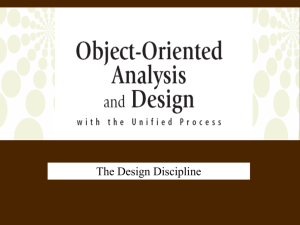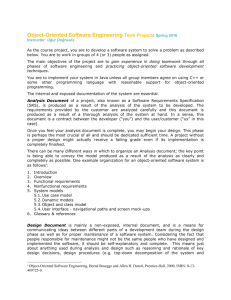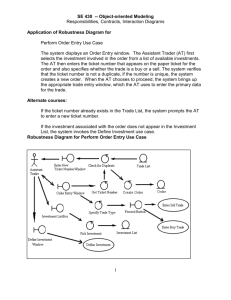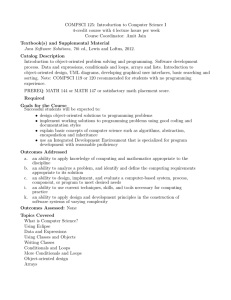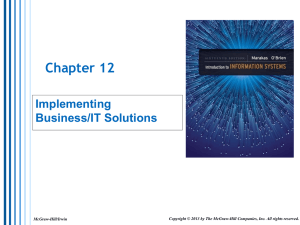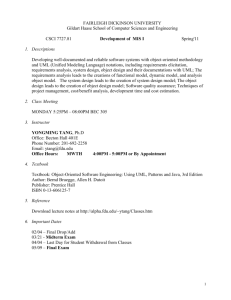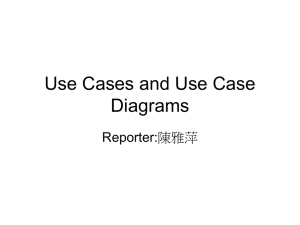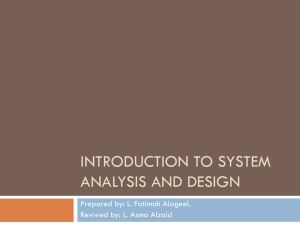chapter 7 slides
advertisement
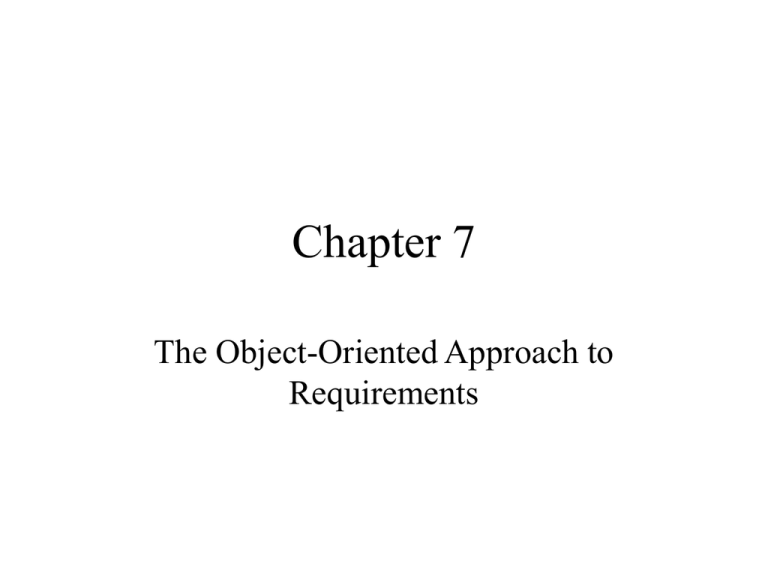
Chapter 7 The Object-Oriented Approach to Requirements Overview • System analysis -begins by defining business events and things -business events are documented in the event table which provides the basis for discovering the data flows and processes that are included in the new system -things are documented In ERD for the traditional approach and in class diagrams for the object-oriented approach Overview(cont) • Object-Oriented Viewpoint --the world consists of objects --Business functions are supported by a set of objects that work together, or collaborate, to implement the function Object-Oriented Requirements • Use case diagrams –show the various user roles and how those roles use the system • Collaboration diagram –identify which objects collaborate, to accomplish a use case or business function • Message –communication between objects within a use case • Sequence diagram– shows the sequence of messages among objects during a use case • Interaction diagram– A collaboration or sequence diagram that shows the interactions between objects • Statechart diagram –a diagram showing the life of an object in states and transitions The Class Diagram • Class Diagrams --define the components of the system (tell what the components make up the system) • Use case, interaction and Statechart diagrams --describe the behavioral aspects of the system (tell what the components do) The System Activities:An OO use case/scenario view • Use case– a single use or task performed by the system for those who use the system (describes an activity that the system carries out in response to an event) • Actor – a role played by a user of the system.

